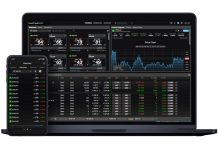Enhance your currency trading skills with these proven tips. From market analysis to risk management, learn the strategies that successful traders use to navigate the complexities of Currency Trading Online.
The most successful traders polish their craft via consistent practice. Additionally, individuals learn to eliminate greed and anxiety from their trading strategies through self-analysis. Any successful forex trader should hone these abilities.
Identify Objectives and Trading Approach
No trip is complete without first planning where you’re going and how you’re going to get there. That is why you need to know what you want out of your trading strategy and then make sure it can help you get there. To be successful in trading, one needs to adopt a specific mindset and strategy since every trading style has a unique risk profile.
The Marketplace and Brokerage
It is critical to invest time into learning about the various Currency Trading Onlinebrokers’ offerings so that you can choose a trustworthy one. You should be familiar with the rules and procedures of each broker before you make a trade with them. As an example, trading in exchange-driven markets is distinct from trading in the over-the-counter or spot markets.
An Unwavering Approach
Knowing your decision-making process for trade execution is essential before entering any market as a trader. Before deciding to enter or quit a transaction, you should know what data is necessary to do so. To find the optimal time to execute the deal, some traders opt to watch the fundamentals and charts of the economy. For some, it’s all about the numbers. Be consistent and make sure your process is adaptive regardless of which one you choose. It is important that your system can adapt to the ever-shifting dynamics of a market.
Find the Points of Access and Departure
When comparing charts across several timeframes, many traders find themselves bewildered by the seemingly contradictory data. On one chart, you might see a buying opportunity; on another, you might see a sell indication. As a result, align the two if you are utilizing a weekly chart for fundamental trading analysis and a daily chart for signal timing. Put simply if the weekly chart indicates a buy signal, you should hold off on buying until the daily chart verifies the same. Accurately time your actions.
Find Out What You Can Anticipate
You may calculate your system’s reliability using the expectancy formula. If you want to know how profitable your winning transactions were relative to how much money you lost on your losing ones, you need to look back at your trading history and compare the two.
Payoff to Risk Ratio
Think about how much money you can make and how much risk you can handle before you trade. Traders can learn about their long-term profit potential with the use of a risk-reward ratio.
Profit-Stop Orders
Stop-loss orders restrict losses by exiting a position at a predetermined exchange rate. Forex traders use stop-loss orders to restrict risk per trade and avoid huge losses. A winning percentage trading technique is important, but so is controlling risk and losses to avoid draining your brokerage account.
Attention and Minimal Setbacks
Keep in mind that your money is at risk once you’ve financed your account. As a result, you shouldn’t have to worry about paying for day-to-day expenses with your funds. You should treat your trading money like holiday spending. The money you spent on the vacation is gone. Keep a consistent mindset when it comes to trading. One of the most important aspects of risk management is developing the mental toughness to absorb tiny losses. Your success rate will skyrocket if you stop worrying about your equity and start concentrating on your trades, even if it means accepting tiny losses.
Stimulating Reactions
If your trade goes according to plan you’ll establish a positive feedback loop. A positive feedback pattern is formed when a trade is well-planned and executed. If the trade turns a profit, the cycle of success will continue, and confidence will grow. If you follow a well-thought-out trade plan and incur a tiny loss, you will still be creating a positive feedback loop.
Carry Out Weekend Evaluations
Study weekly charts for news or trends that could impact your trade on weekends, when markets are closed. Maybe a pattern is forming a double top, and the market reversal is being suggested by the pundits and the news. The pattern may be influencing the pundits, who in turn perpetuate the pattern; this is an example of reflexivity in action. All of your brilliant schemes will emerge in the stark, dispassionate light of reason. Master the art of patience and wait for your setups.
Document Everything
A written record is an excellent resource for education. Get a chart and write down every single reason you’re making the trade, including any underlying factors that play a role. Put your entry and exit positions on the chart. Write down any pertinent information, including any compelling emotional motivations to take action on the chart.
Conclusion
The aforementioned procedures will guide you towards a systematic trading strategy and ought to assist you in honing your trading abilities. Because trading is an art form, mastery can only be achieved via long, dedicated sessions of practice.
Image by starline







































